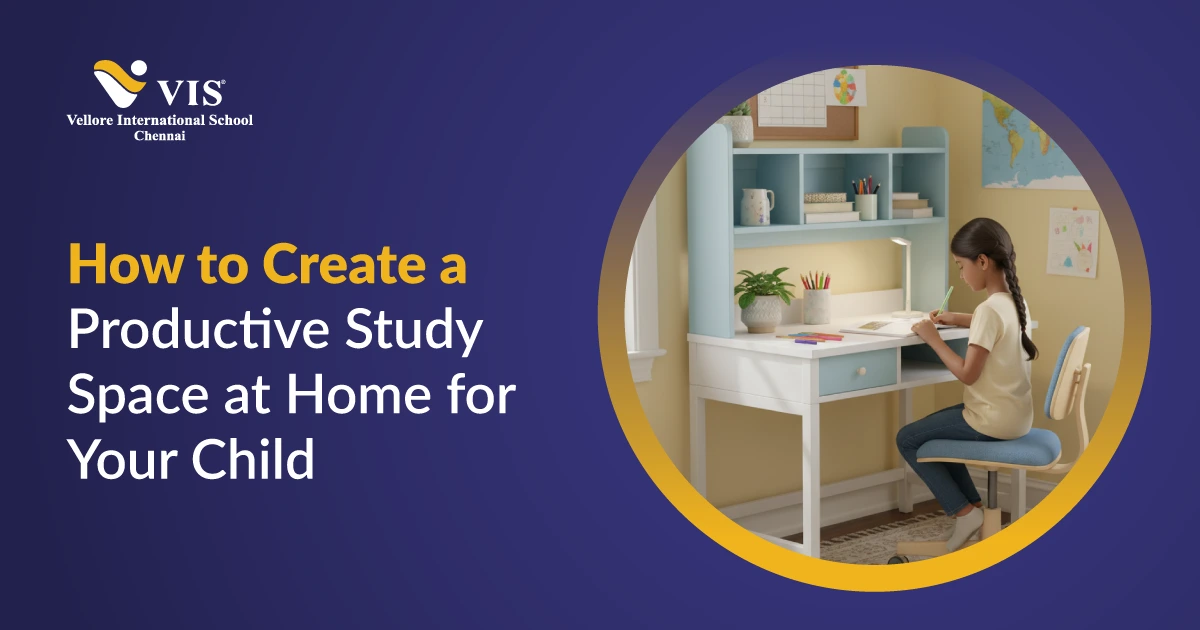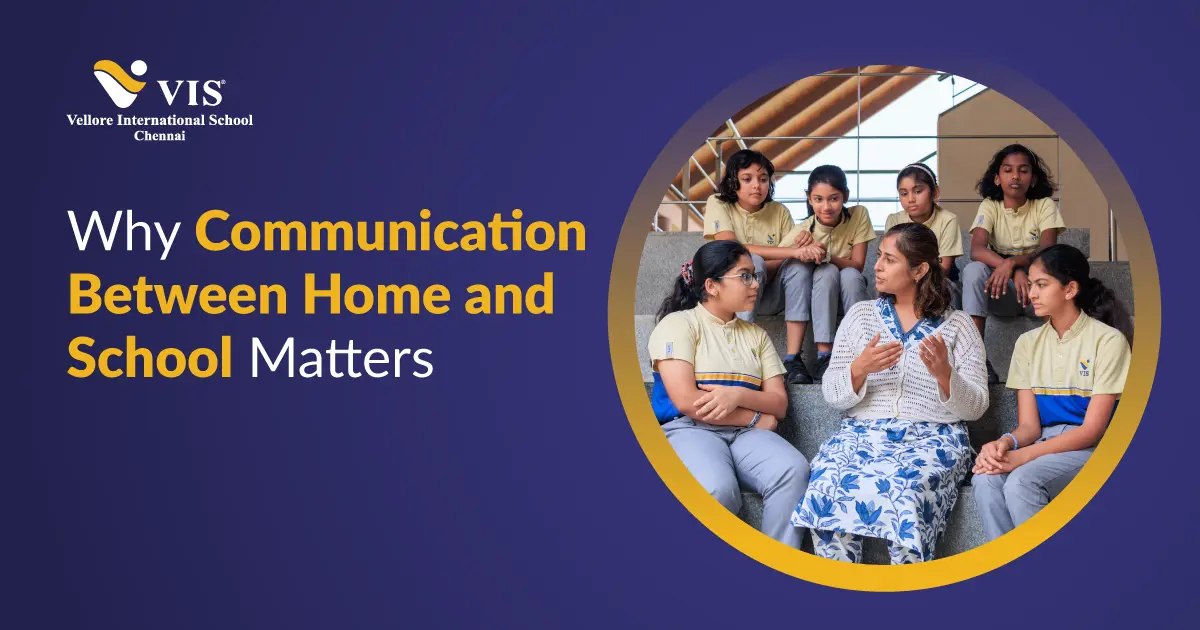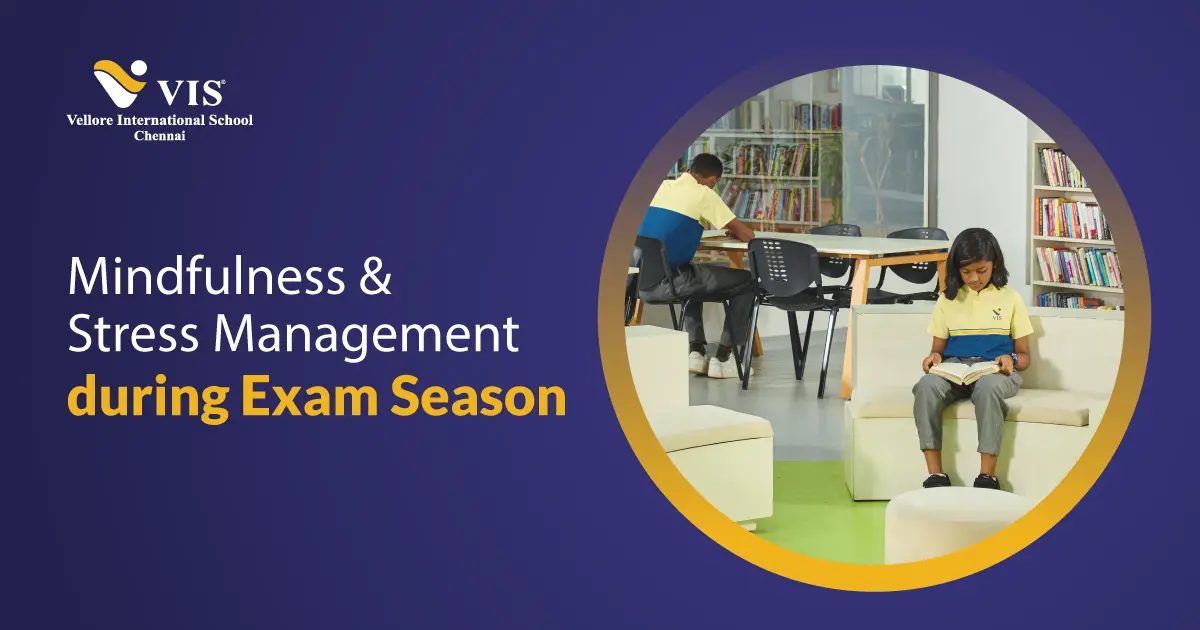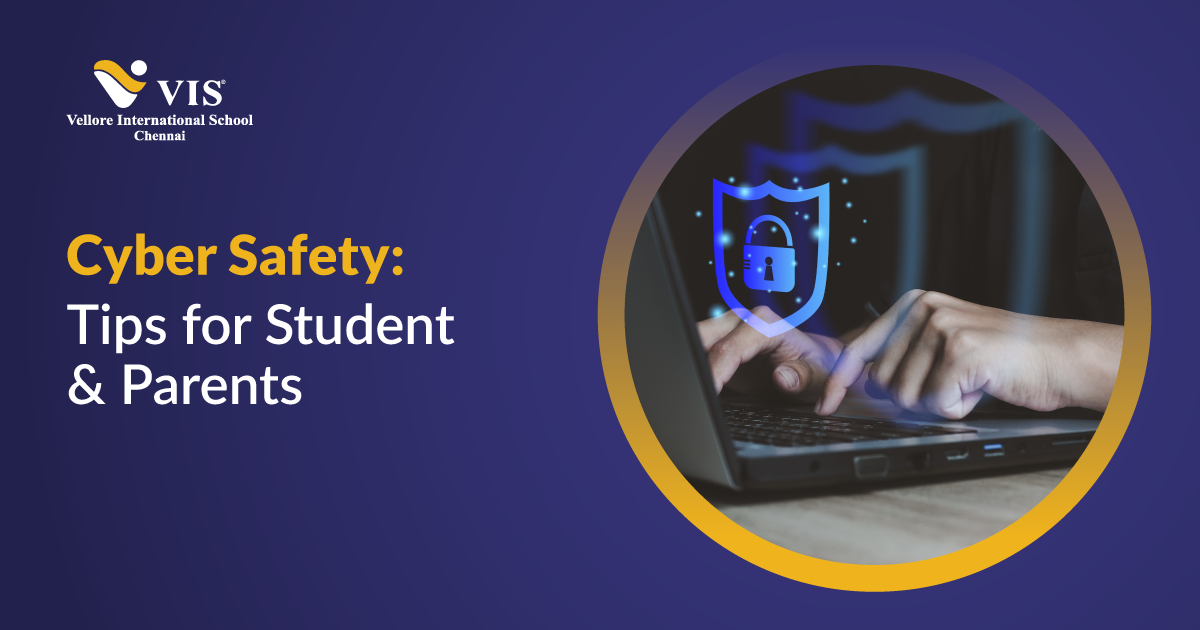Who shapes children’s confidence more: the teacher explaining a lesson or the parent cheering them on from the sidelines? And what happens when these two worlds join forces seamlessly?
The answer lies in effective communication between home and school.
When families and schools speak the same language, magic happens, learning deepens, trust strengthens, and every child feels supported to shine. This blog explores why Communication between home and school matters
1. The Foundation of a Child’s Learning Journey
Every child learns within two key environments: the home and the school. While schools offer structured education, homes provide emotional stability, habits, and reinforcement. For a child to flourish, these two spheres must not operate in isolation.
Communication between home and school builds a bridge that ensures consistency between what is taught at school and what is reinforced at home. When parents are aware of classroom activities, behavioural expectations, and learning goals, they can support their children more effectively.
Similarly, when teachers understand the child’s home environment, they can adapt teaching methods to better suit individual needs.
2. Building Trust and Transparency
Trust is the core of any partnership, and education is no different. Effective communication between home and school creates a culture of openness. Parents feel more confident in the school’s approach and teachers feel supported by families.
- Parents are informed about classroom practices, ensuring no surprises.
- Teachers gain valuable insights into students’ behaviour and learning patterns at home.
- Students benefit from consistent expectations, which reduce anxiety and confusion.
Regular parent teacher interactions, newsletters, and digital portals build this trust. When both sides are transparent, problems can be addressed early, solutions can be co-created, and successes can be celebrated together.
3. Supporting Academic Achievement
Research consistently shows that students perform better academically when parents are actively involved in their education. But involvement doesn’t mean micromanaging. It means communicating regularly and constructively with the school.
Strong communication between home and school ensures that:
- Parents understand the curriculum and can help their children revise effectively.
- Teachers receive timely feedback on how children cope with lessons at home.
- Any academic gaps are identified and addressed quickly.
For example, if a student struggles with math at home, parents can share this with teachers early on. The teacher can then provide extra support or adjust teaching methods, preventing the issue from snowballing into a bigger problem later.
4. Encouraging Positive Behaviour and Discipline
A consistent behavioural approach between home and school is crucial for children. Imagine a scenario where a child is expected to behave one way at school but experiences completely different rules at home. It leads to confusion and often misbehaviour.
Through communication between home and school, parents and teachers can:
- Align expectations regarding discipline and conduct.
- Reinforce positive behaviour consistently.
- Address behavioural issues early, before they escalate.
Behavioural strategies are most effective when both parents and teachers are on the same page. For example, if a child receives praise for good manners both at home and in the classroom, it reinforces the desired behaviour strongly.
5. Strengthening Social and Emotional Development
Education isn’t just about academics. A child’s emotional and social development plays a huge role in their overall growth. Teachers often observe different behaviours than parents do, and sharing these observations can be immensely valuable.
- Teachers may notice anxiety, withdrawal, or friendship challenges at school.
- Parents may notice stress, sleep disturbances, or changes in mood at home.
Communication between home and school allows both parties to compare notes and take a united approach to supporting the child’s emotional well-being.
6. Modern Tools That Make Communication Easier
In the digital era, communication has become faster and more efficient. Schools now use a mix of traditional and modern tools to stay connected with families:
- Emails and newsletters keep parents informed about events and academic updates.
- Parent portals and apps provide real time updates on attendance, assignments, and performance.
- Video calls bridge geographical gaps for parents who may not be able to visit physically.
- WhatsApp groups and SMS alerts ensure instant communication.
However, while tools make things easier, the quality of communication between home and school remains paramount. Messages should be clear, respectful, and solution oriented, not overwhelming or one sided.
7. Parental Engagement
Parental engagement goes far beyond attending annual day functions or signing report cards. It involves active participation in the child’s learning journey. This can include:
- Attending workshops or orientation sessions.
- Participating in classroom activities or volunteering.
- Giving feedback on learning methods.
- Using school apps and portals to stay updated.
When parents are genuinely engaged, children feel that their education matters. This sense of importance motivates students to take their studies seriously.
8. Handling Challenges and Conflicts Effectively
Even in the best schools, misunderstandings or conflicts may arise between parents and teachers, or regarding academic performance. Open and respectful communication between home and school is the key to resolving these issues efficiently.
For example:
- If a parent is concerned about their child’s grades, discussing it calmly with teachers can lead to targeted solutions.
- If a teacher notices disruptive behaviour, sharing observations with parents can reveal underlying causes like stress or learning difficulties.
When communication lines are open, challenges turn into opportunities for collaboration rather than friction.
9. Creating a Sense of Belonging
Children thrive when they feel they belong to a supportive community. When parents and schools communicate well, they create a shared environment where the child knows that everyone is working toward their success.
Regular updates, inclusive school events, and acknowledgement of cultural values strengthen this sense of belonging. It also teaches children by example, when they see adults working together, they learn the importance of teamwork and communication in their own lives.
10) Inclusive Communication for Diverse Families
Schools often serve families from diverse linguistic, cultural, and socioeconomic backgrounds. Inclusive communication between home and school ensures that no family feels left out.
This can be achieved by:
- Offering translated materials where necessary.
- Being sensitive to cultural differences in communication styles.
- Ensuring that digital tools are accessible to all families.
- Encouraging feedback through multiple channels.
When every family feels heard and respected, the entire school community benefits.
Long-Term Benefits of Strong Home–School Partnerships
The benefits of sustained communication between home and school extend far beyond immediate academic performance. Over time, students develop:
- Stronger self-esteem and confidence.
- Better attendance and discipline.
- Improved social skills and adaptability.
- A lifelong love of learning.
For parents, this partnership builds a deeper understanding of their child’s strengths and challenges. For teachers, it creates a more supportive environment where educational goals can be met more effectively. For students, it creates a stable foundation for growth.
Overcoming Common Communication Barriers
Despite the benefits, some challenges may arise: busy schedules, language barriers or technological gaps. Overcoming these requires conscious effort:
- For Parents: Prioritise attending meetings, stay updated through digital tools, and don’t hesitate to communicate concerns early.
- For Schools: Offer flexible meeting times, multilingual support, and accessible digital platforms.
By addressing these barriers, both sides ensure that communication between home and school remains smooth and beneficial for the child.
Vellore International School: A Model for Effective Home – School Communication
At Vellore International School (VIS), communication between home and school is considered the heart of the educational experience. The school believes that education is a shared responsibility, and parents are valued partners in this journey.
VIS uses a blend of digital tools, regular meetings, and personalised feedback systems to ensure that every parent stays informed and involved. Parent-teacher interactions are designed not as one-way updates but as collaborative discussions focused on each child’s growth.
This commitment builds a strong, trusting community where students feel supported at every step, both at home and in school.
Final Thoughts: Communication as the Golden Thread
Education is a shared journey. Teachers light the path, parents provide support, and children walk forward with confidence. Communication between home and school is the golden thread that weaves these roles together into a harmonious tapestry of growth, learning, and community.
When parents and schools truly communicate, the results are transformative. Students flourish, relationships deepen, and education becomes a collective celebration.
FAQs
1. Why is communication between home and school important for students?
Strong communication between home and school builds trust, keeps parents informed, and supports children’s academic and emotional growth. When families and schools work together, students feel more supported and perform better both inside and outside the classroom.
2. How can parents improve communication between home and school?
Parents can improve communication between home and school by attending meetings, checking updates regularly, and sharing feedback openly. Consistent involvement shows children that education is valued and encourages better learning habits at home.
3. What are the benefits of effective communication between home and school?
Effective communication between home and school leads to early problem solving, stronger parent-teacher relationships, and improved student outcomes. It ensures children receive consistent guidance and emotional support.
4. How does communication between home and school impact academic performance?
Regular communication between home and school allows parents and teachers to address challenges quickly, align expectations, and celebrate progress. This teamwork motivates students, improves attendance, and enhances overall academic achievement.
5. What are some practical ways schools can strengthen home-school communication?
Schools can use digital platforms, newsletters, regular parent-teacher meetings, and open feedback channels to build stronger home-school communication. When communication is clear and consistent, it creates a shared vision that benefits every student’s development.


























